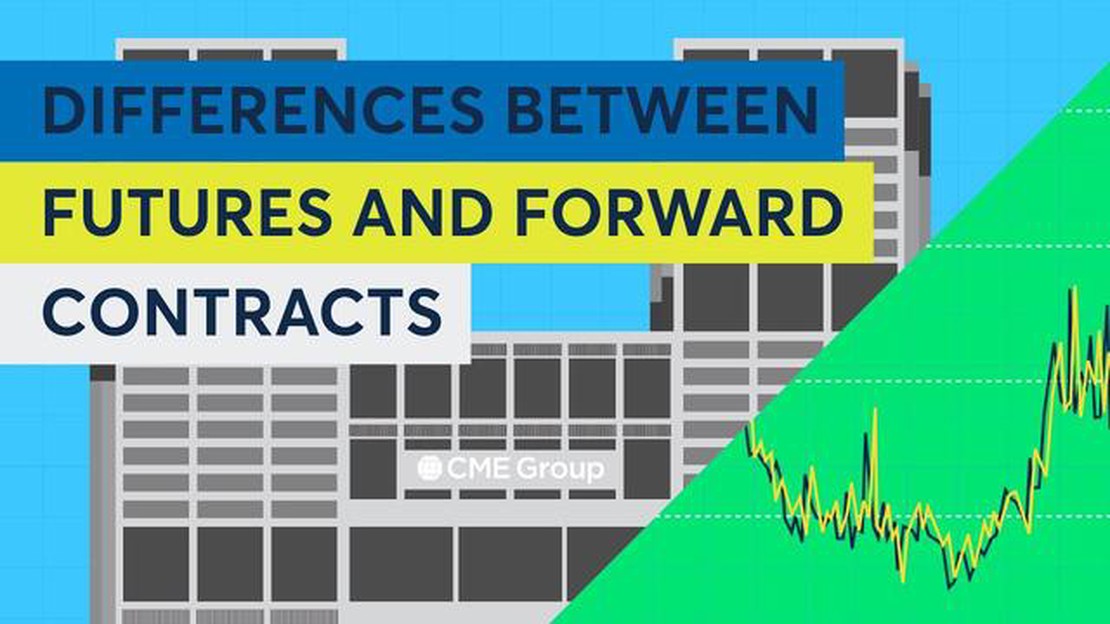Is forex trading allowed by RBI? Find out now
Is Forex Trading Allowed by the RBI? The Reserve Bank of India (RBI) is the central banking institution of India that is responsible for the …
Read Article
Foreign exchange (FX) markets offer a range of derivative products for hedging or speculating on currency movements. Two widely used instruments in the FX market are FX forward contracts and FX futures contracts. While they both deal with the future exchange rate of currencies, they have distinct characteristics and are traded on different platforms.
An FX forward contract is an agreement between two parties to exchange a specified amount of one currency for another at a predetermined rate on a future date. It is a customized contract that is traded over-the-counter (OTC) and can be tailored to meet the specific needs of the participants. FX forward contracts are usually used by businesses and institutions to protect against currency fluctuations and manage their foreign currency exposures.
On the other hand, an FX futures contract is a standardized contract that is traded on an exchange. It specifies the delivery of a specified amount of one currency for another at a predetermined rate on a future date. Unlike FX forward contracts, FX futures contracts have standardized terms, such as contract size, maturity date, and tick size, which are determined by the exchange. This standardized nature makes FX futures contracts more liquid and accessible to a wider range of participants, including individual traders and speculators.
Therefore, the main distinction between an FX forward and an FX futures contract lies in their customization and trading platforms. While FX forward contracts are tailored to the needs of the participants and traded over-the-counter, FX futures contracts are standardized and traded on an exchange. Understanding these distinctions is crucial for market participants to choose the appropriate instrument to manage their currency exposures or engage in speculative activities in the FX market.
FX forward contracts and FX futures contracts are two commonly used financial instruments in the foreign exchange market. While both contracts serve the purpose of hedging currency risk and speculating on exchange rates, there are some key differences between them.
 7. Regulation: FX forward contracts are not subject to the same level of regulatory oversight as FX futures contracts. FX futures contracts are regulated by the relevant governing bodies, such as the Commodity Futures Trading Commission (CFTC) in the United States, which provides a higher level of transparency and investor protection.
7. Regulation: FX forward contracts are not subject to the same level of regulatory oversight as FX futures contracts. FX futures contracts are regulated by the relevant governing bodies, such as the Commodity Futures Trading Commission (CFTC) in the United States, which provides a higher level of transparency and investor protection.
Read Also: Understanding the Average Bid-Ask Spread: What You Need to Know
In conclusion, while both FX forward contracts and FX futures contracts are used for similar purposes in the foreign exchange market, they have distinct differences in terms of trading platform, settlement date, contract size, liquidity, counterparty risk, flexibility, and regulation. Understanding these differences is crucial for market participants to make informed decisions when choosing between these two financial instruments.
FX forward contracts are financial instruments used to hedge against foreign exchange rate fluctuations. These contracts allow parties to agree to exchange currencies at a predetermined exchange rate on a specified future date.
FX forward contracts are often used by businesses engaged in international trade to mitigate the risk of currency fluctuations. By locking in a specific exchange rate, businesses can avoid potential losses resulting from unfavorable currency rate movements.
One key feature of FX forward contracts is that they are customizable. Parties can agree on various aspects of the contract, including the currencies involved, the amount to be exchanged, the maturity date, and the exchange rate.
FX forward contracts are typically traded over-the-counter (OTC) and are not standardized or regulated by an exchange. This allows parties involved to have greater flexibility in designing the contract to meet their specific needs.
Settlement of an FX forward contract occurs on the specified future date, known as the maturity date. At this time, the parties must exchange the agreed-upon currencies at the predetermined exchange rate.
It’s important to note that FX forward contracts carry counterparty risk. If one party fails to meet its obligations, the other party may incur financial losses. To mitigate this risk, parties often enter into agreements with trusted counterparts or use collateral arrangements.
In conclusion, FX forward contracts provide businesses with a means to manage currency risk arising from international trade. These contracts are customizable and allow parties to lock in a specific exchange rate for a future date. However, it’s essential to be aware of the counterparty risk associated with FX forward contracts and take appropriate measures to mitigate this risk.
Read Also: How Long Does a Back 9 Take in Toontown? Discover the Duration Here!
FX futures contracts are derivative financial instruments that allow market participants to buy or sell a specified currency at a predetermined price and date in the future. These contracts are standardized and traded on regulated exchanges, making them a popular choice for hedging currency exposures and speculating on future exchange rate movements.
One of the key features of FX futures contracts is their standardized nature. Every contract has a fixed size, maturity date, and delivery month. This standardization ensures that all market participants have access to the same terms and conditions, promoting transparency and liquidity in the market.
FX futures contracts are marked-to-market daily, which means that the gains or losses on the contract are settled at the end of each trading day. This feature allows market participants to exit their positions before the contract’s expiration date, providing flexibility and the opportunity to take profits or limit losses.
Trading FX futures contracts requires a margin deposit, which acts as collateral for potential losses. The margin requirement is determined by the exchange and varies depending on factors such as volatility and liquidity of the underlying currency pair. This initial margin, along with the variation margin settled daily, helps to ensure the financial integrity of the market.
FX futures contracts offer various benefits compared to other forex instruments. They provide a transparent and regulated marketplace, which reduces counterparty risk and increases market integrity. These contracts also allow for efficient price discovery and provide valuable information about market expectations for future exchange rates.
Overall, FX futures contracts are versatile instruments that cater to a wide range of participants, including commercial banks, multinational corporations, institutional investors, and retail traders. Whether hedging currency risk or speculating on future exchange rate movements, these contracts provide a reliable and efficient way to participate in the global currency markets.
An FX forward contract is an agreement between two parties to exchange a specified amount of a currency at a predetermined exchange rate on a future date. An FX futures contract, on the other hand, is a standardized contract traded on a regulated exchange, with the settlement date and price determined by the exchange.
FX forward contracts are commonly used by companies to hedge against currency risk. By entering into an FX forward contract, a company can lock in a specific exchange rate for a future currency conversion, which helps protect against potential losses due to currency fluctuations.
Yes, retail investors can participate in the FX futures market through their brokerage accounts. However, it is important to note that trading FX futures carries a higher level of risk and may require a larger initial investment compared to trading other financial instruments.
Some of the main advantages of trading FX futures contracts include liquidity, transparency, and centralized clearing. FX futures contracts are traded on regulated exchanges, which provide a transparent marketplace with standardized contract terms. Additionally, the centralized clearing ensures that both parties fulfill their obligations, reducing counterparty risk.
Is Forex Trading Allowed by the RBI? The Reserve Bank of India (RBI) is the central banking institution of India that is responsible for the …
Read ArticleFind the best exchange rate in Qatar Are you planning a trip to Qatar? One important thing to consider when traveling abroad is how to get the best …
Read ArticleUnderstanding Pip Trading and its Benefits When it comes to forex trading, understanding the basics of pip trading is essential. Pips, short for …
Read ArticleHow to Trade Options in the UK Options trading can be an exciting and potentially lucrative venture for individuals looking to expand their investment …
Read ArticleUnderstanding How Forex Trading Works Forex, short for foreign exchange, is the process of buying and selling different currencies in the global …
Read ArticleIC Markets raw spread charges IC Markets is a leading online forex broker known for its competitive pricing and transparent trading conditions. With …
Read Article